Columbia River spring Chinook returns look better in 2022, and sport fisheries will be announced later this month Leave a reply
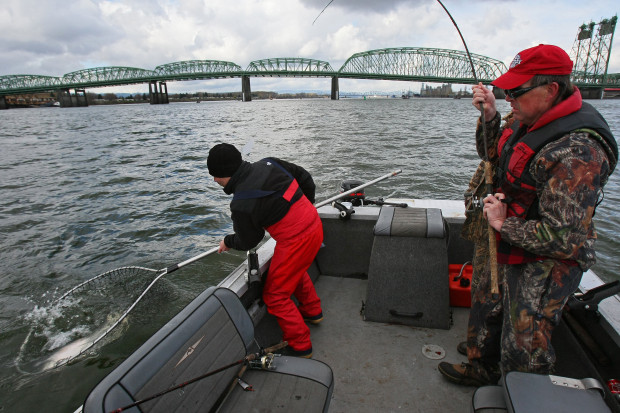
Contributed by Mark Yuasa, WDFW
The first day of spring is only six weeks away and many anglers are anticipating with great eagerness the return of Columbia River spring Chinook.
Back in December, the Washington Department of Fish and Wildlife (WDFW) released a “crystal ball” forecast of 197,000 spring Chinook (compared to 143,200 forecast and actual return of 152,675 in 2021), and should provide some quality time on the water.
The upriver return of 122,900 is the highest predicted return since 2016 and 65% of the 10-year average. The 2021 forecast was 75,200 with an actual return of 91,756 and that was the fourth lowest since 1999. The Snake River spring Chinook portion is predicted at 74,100 up from 68,000 forecast and 60,939 actual return in 2021.
Spring Chinook – the first migrating salmon to arrive in Washington – are prized for their tasty, Omega-3-laced, red-orange-colored meat, which is similar to fish from Alaska’s Copper River. These fish primarily enter freshwater from February through June to spawn in Columbia tributaries during August through October.
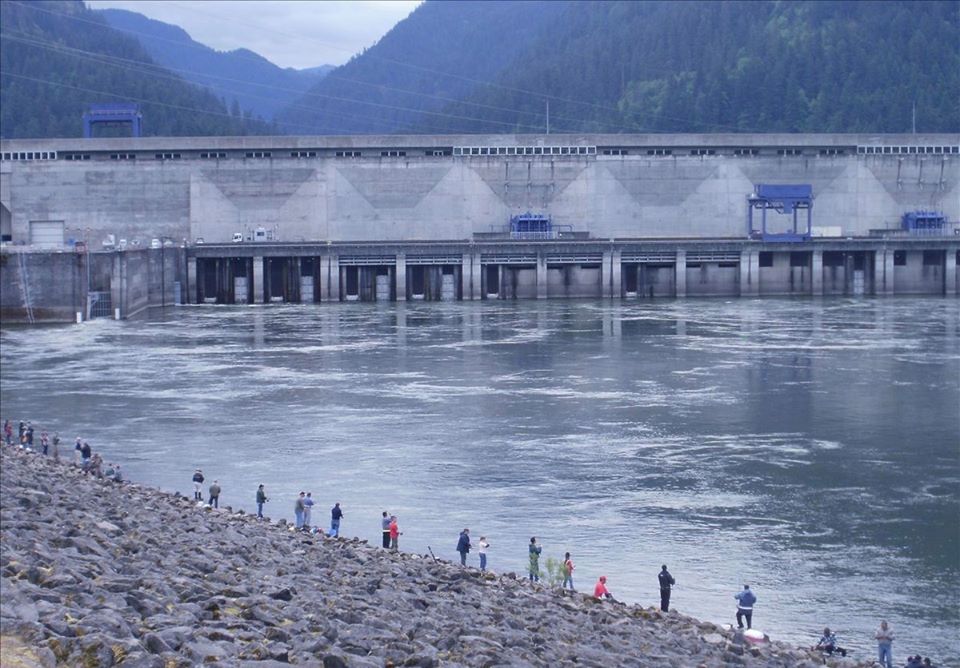
Under current permanent regulations, the 2021 spring Chinook fishery on the Lower Columbia is open daily now through March 31 from Buoy 10 to the I-5 Bridge.
WDFW and the Oregon Department of Fish and Wildlife (ODFW) will consider Columbia “Select Area” commercial winter, spring, and summer fisheries and treaty commercial fisheries at a meeting on Feb. 15.
This will be followed by another WDFW/ODFW Joint Compact meeting on Feb. 23 to decide Columbia spring Chinook sport fisheries. There is a yearly 30 percent buffer on the Columbia spring Chinook mainstem fisheries that protects against overfishing.
As in the past, additional in-season meetings from March through May will provide updates on actual returns and ongoing fisheries as they become available with a chance of extending the season if the run appears larger than expected.
Returning adult spring Chinook are split into two categories with lower river stocks (originating from tributaries below Bonneville Dam) and upriver stocks (originating from tributaries above Bonneville). Each stock has age four-, five- and six-year-old fish. Fish that are three-years-old are referred to as a “jack” spring Chinook after spending just one year in the ocean.
Spring Chinook migrating from mid-February through March tend to be larger sized age five fish headed to lower river tributaries, and peak numbers usually occur by late March. The smaller four-year-old stocks start to build after mid-March and peak in April. Upriver bound fish are seen after mid-March and peak abundance at Bonneville occurs in late April to mid-May.
On the lower river Washington side, the Kalama forecast in 2022 is 2,000 (2,200 was forecast in 2021 and an actual return of 1,883) and is similar to the recent 10-year average and 106% of the 2021 adult return.
The Cowlitz is 4,100 (1,800 and 3,478) and is 39% of the 2012–2021 average and 118% of the 2021 adult return. The Lewis is 2,400 (2,400 and 2,840) and is higher than the recent 10-year average and 85% of the 2021 adult return.
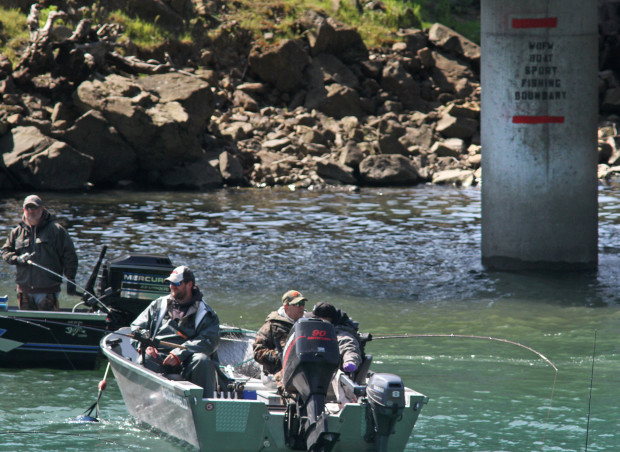
An estimated 711 hatchery adult spring Chinook were kept in Washington lower river tributaries in 2021 including 49 in Cowlitz, 455 in Kalama and 207 in Lewis. The combined hatchery adult spring Chinook harvest rate in these tributaries was 8.7%, compared to the recent 10-year average of28.9%.
In 2021, the Cowlitz, Kalama and Lewis rivers were open under permanent rules from Jan. 1 through March 4. The Cowlitz was closed to Chinook retention March 5 to June 25 and reopened June 26 to July 31. The Kalama was open March 5 to June 4 with a reduced daily limit of one adult but for June 5 to July 31 the Kalama River returned to a two adult daily limit. The Lewis was open for spring Chinook until April 30 and closed to Chinook retention from May 1 to July 31.
On the lower river Oregon side, the 2022 Willamette River spring Chinook run of 52,900 is a slightly better than forecast of 52,400 in 2021 and an actual return of 43,148. This represents an increase from 2017 to 2021) and 2012 to 2021 averages of 42,620 and 51,416, respectively. The 2022 forecasted return would represent a 22.6 percent increase from the 2021 actual return of 43,148. The Sandy River forecast is 5,600 compared to a forecast of 5,300 in 2021 and an actual return of 5,676.
The 2021 Columbia mainstem sport catch below Bonneville, including catch in the summer steelhead fishery, was 6,813 adult spring Chinook (5,385 kept and 1,428 released), 744 spring Chinook jacks (547 kept and 197 released), 518 steelhead (294 kept and 224 released) and 67 sockeye (released) from 67,219 angler trips. The spring Chinook catch was the highest since 2018. The total upriver spring Chinook catch (kept catch plus release mortality) in the sport fishery below Bonneville was 4,088 adults.
The Lower Columbia mainstem spring Chinook season was open daily from Jan. 1-Feb. 28 from Buoy 10 to I-5 Bridge, and March 1 to April 4 from Buoy 10 to Bonneville, plus May 21-23, May 29, and June 1-15 from Tongue Point to Bonneville. The sockeye fishery opened on May 15 and 1,119 sockeye were kept and 105 released.
It isn’t unusual each winter to see the first spring Chinook caught in January or early February either in the Lower Columbia, Multnomah Channel or Lower Willamette. The first spring Chinook catch recorded in WDFW sampling during 2021 occurred on March 12 at Longview.
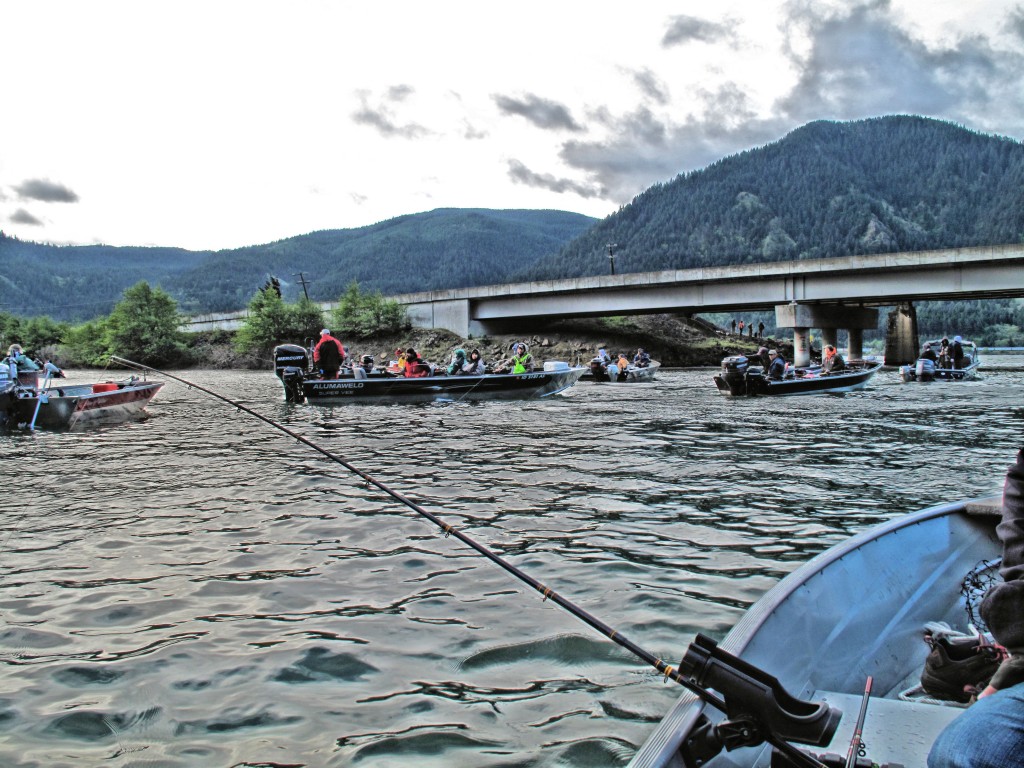
Spring Chinook returns to tributaries above Bonneville Dam are showing signs of improvement in 2022 after recovering from dismal ocean conditions between 2015 and 2019 that were among the worst in the past 20 years.
Spring Chinook returns in tributaries above Bonneville in the Wind is 4,200 (1,200 was preseason forecast and 3,227 was actual return in 2021) for 2022. Hatchery returns of adult spring Chinook to the mouth of the Wind River during the past ten years (2012–2021) averaged 4,100 fish (range 1,400–7,400).
The Drano Lake forecast is 3,800 (3,900 and 3,299) and is 115% of the 2021 return and 72% of the recent 5-year average return. The Klickitat forecast is 1,800 (1,500 and 1,821), which is similar to the 2021 return and the recent 10-year average return.
The Columbia mainstem above Bonneville 2021 season total catch estimates for adult Chinook include 761 kept and 348 released from approximately 5,300 angler trips.
The Columbia above Bonneville to McNary for spring Chinook had a 2021 season from March 16 to May 5, May 22-23, May 29-30, June 5-6 and June 12-15. That was a big improvement over a brief eight-day season in 2020.
Two sections of the Snake River spring Chinook season were open May 4, 7, 11, 25 and June 4 and 6, and generated 7,736 angler hours with 443 adult spring Chinook kept and 123 released.
Summer Chinook could see an upswing
There could also be some positivity as we progress into early summer along the 1,243-mile stretch of the Columbia River.
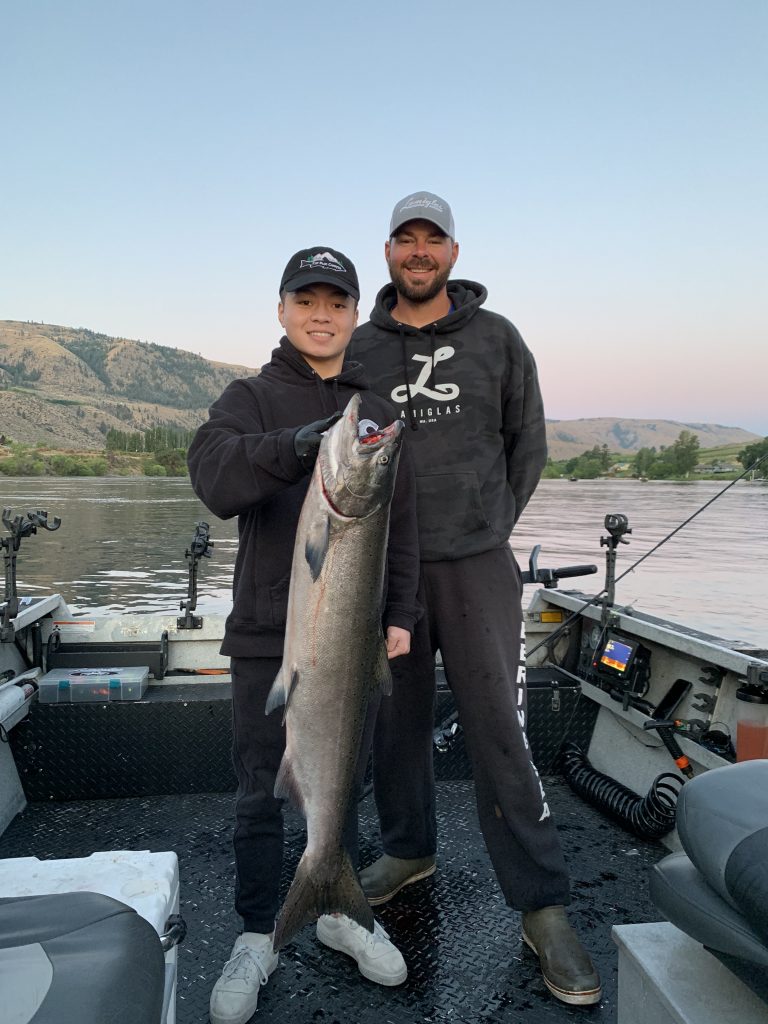
The 2022 Upper Columbia summer Chinook return of 57,500 is down from a forecast in 2021 of 78,800 but somewhat better than an actual return of 56,800 and was the 15th largest since 1980. It is also way up from 38,300 forecast and an actual return of 65,494 in 2020, and 36,340 and 34,619 in 2019.
The 2022 overall return is expected to include 34,200 age-four fish, 22,900 age-five fish, and 400 age-six fish. If accurate, this projection would represent the 15th highest return since 1980 and be 83% of the average return observed over the past decade
Fishing for summer run kings also known as “June Hogs” was open in July of 2021 and generated fair to good fishing near Rocky Reach Dam to Chelan Falls and many open areas downstream.
The bulk of the summer Chinook fishery occurred July 1-Oct. 15 (season was open with marked selective fishery regulations in various locations including tributaries) upstream of Priest Rapids Dam saw 29,208 angler trips with 5,057 adult Chinook kept and 1,952 released (compared to 39,420 angler trips in 2020 with 4,742 adult Chinook kept and 1,772 released).
The summer Chinook fishery June 16-July 5 (Open for sockeye and steelhead only from June 16-July 31) in Lower Columbia from Astoria Bridge to Bonneville saw 28,868 angler trips with 2,134 adult Chinook kept and 998 released, plus 534 sockeye kept and 72 released and 1,048 steelhead kept and 950 released.
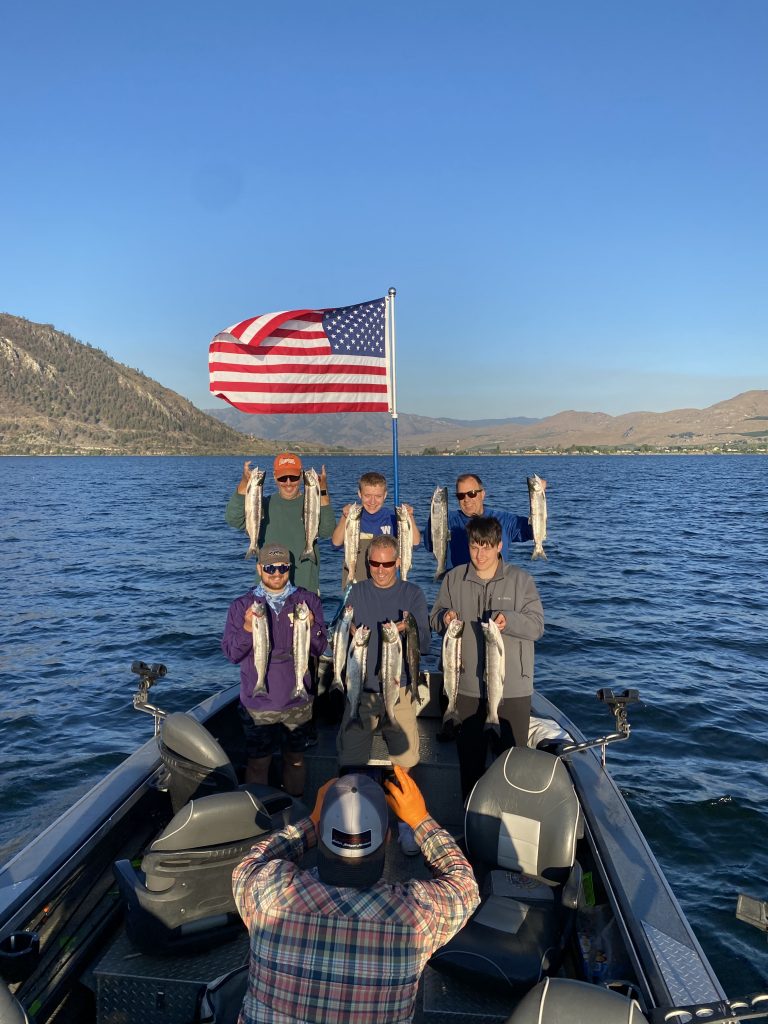
Summer sockeye forecast improved
Anglers should also see a noticeable improvement on sockeye success in the Columbia during late spring and early summer with a forecast of 198,700 up from 155,600 in 2021 and an actual return of 152,309. The 2022 forecast is 64% of the 2012 to 2021 average total return of 308,728.
While it might not be anywhere near the 2020 return of 345,018 – the highest return since 2016 – it should generate some fairly good fishing at places like the Brewster Pool.
The Okanogan sockeye run forecast of 175,700 (127,300 was forecast with an actual return of 105,492 in 2021) is the key driver in summer upper river fisheries where many linger in the Brewster Pool, a popular early-summer deep-water salmon fishing location on the Upper Columbia.
Sockeye migrate from its confluence just below Chief Joseph Dam, north into its headwater lakes in British Columbia that is known for its notoriously warm water and changing river flow patterns in the summer.
The summer-migrating sockeye are learning to adapt their upstream migration timing in recent years therefore most fish returns are peaking sooner than later in the summer. Over the past few decades, the run would peak by early July but it’s shifted to late June and has resulted in higher sockeye survival in recent years.
The Lake Wenatchee sockeye forecast is 19,200 (27,300 was forecasted in 2019 with an actual return of 41,219) and falls below the escapement objective and could put the highly popular mid- to late-summer sport salmon fishery in jeopardy. The annual escapement goal is 23,000 sockeye at Tumwater Dam and only then a lake fishery can be considered.
Look for another massive shad return
Another excellent Columbia shad run is expected in 2022, and anglers can look for another banner year of fishing starting sometime in May.
In 2021, 5.8-million compared to the 10-year average of 3.7-million and was the second consecutive year of just under 6.0-million after a peak record return of 7.7 million in 2019
In the 2021 the Lower Columbia shad fishery had 16,918 angler trips with 153,606 shad kept (effort was down from 17,846 angler trips in 2020 although shad kept was up compared to 138,247).
The Lower Columbia and Lower Willamette sport combined catch was 234,900 shad with an additional 2,000 fish kept in the mainstem commercial fishery. The combined catch of 236,900 was above the recent five-year average of 199,900 fish and represented 4.1% of the total return.
Other tentative upcoming salmon meetings
March 4, WDFW public televideo salmon forecast meeting. March 8-14, Pacific Fishery Management Council (PFMC) meeting at DoubleTree by Hilton Hotel in San Jose, CA, will adopt initial 2022 ocean fishing options. Mid-March specific date TBD, WDFW North of Falcon (NOF) public televideo meeting on fisheries in Puget Sound, Willapa Bay, Grays Harbor and ocean areas north of Oregon. March 23, PFMC public input meeting at 7 p.m. to discuss 2022 season options (TBD for either in person or televideo). Late-March, WDFW NOF public televideo meeting. April 6-13, PFMC meeting at DoubleTree by Hilton Hotel at Sea-Tac to adopt final salmon fishing seasons.
(Mark Yuasa is a Washington Department of Fish and Wildlife Communications Consultant and longtime contributor to ESPN 710 KIRO The Outdoor Line. He also was the fishing and hunting reporter at The Seattle Times for 28 years.)

